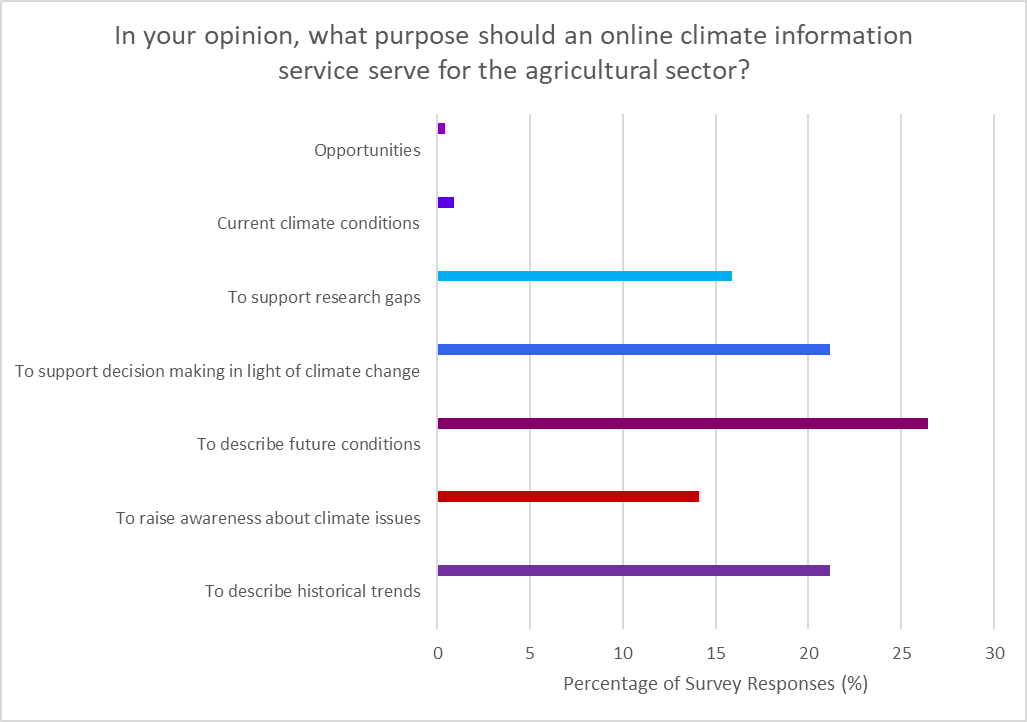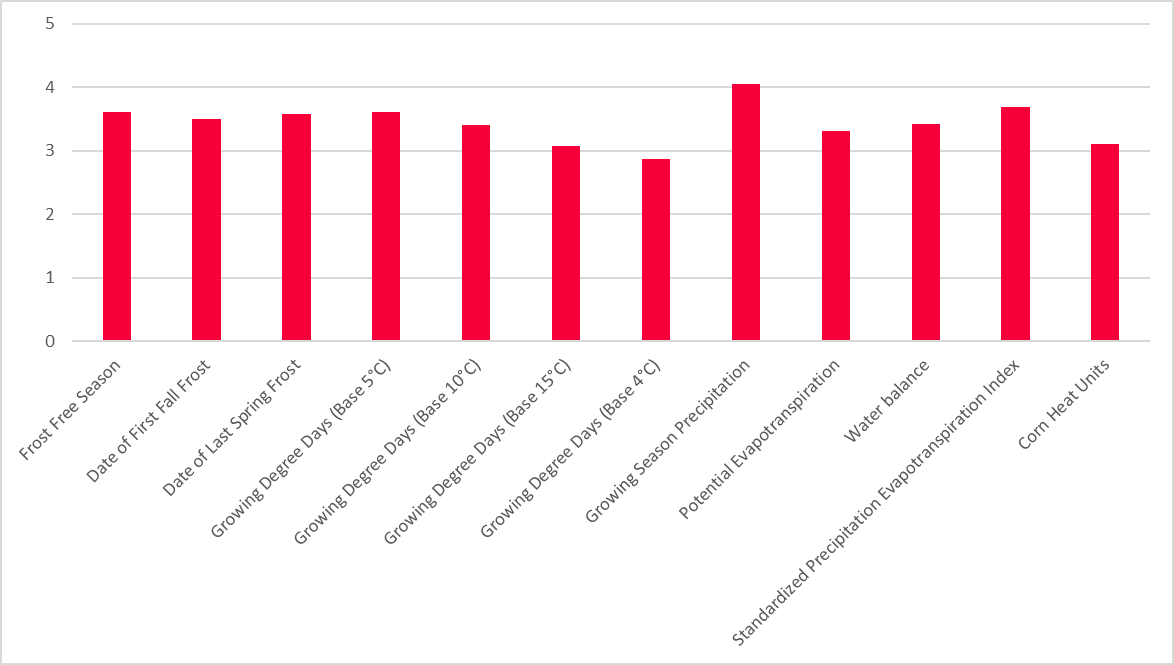Stakeholder Engagement Strategy for the Agriculture Sector Module
For the initial phase of engagement, a bilingual survey was developed by project partners to assess current climate data usage, motivations for accessing future climate data resources, climate indices, priority issues for adaptation, and data formats of interest. The survey was distributed through Agriculture and Agri-Food Canada’s mailing list in January 2020, receiving 206 respondents. The survey was not distributed in Quebec because Ouranos had recently partnered on a similar survey in the province, the results of which were shared with the project team.
The majority of respondents’ location of work was British Columbia, Ontario, and the Prairie provinces. Survey respondents were largely working as producers (45%), administrators (15%), and researchers (13%), though other roles in the sector were also represented. The initial survey provided insight into the climate information needs of producers and informed development of the initial module content. With a greater understanding of the subsets of the agricultural sector audience, subsequent engagement with the agricultural sector involved outreach events, presenting the agricultural content on ClimateData.ca to a broader audience, including researchers and government.


